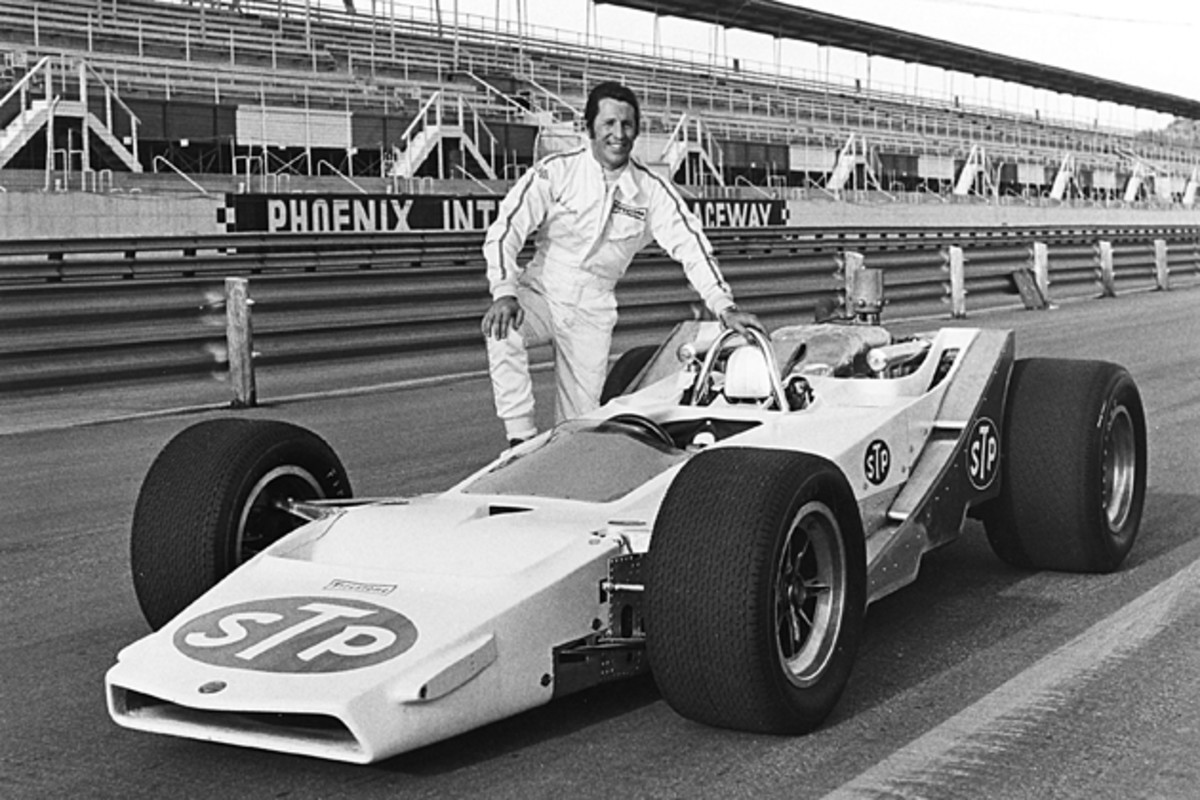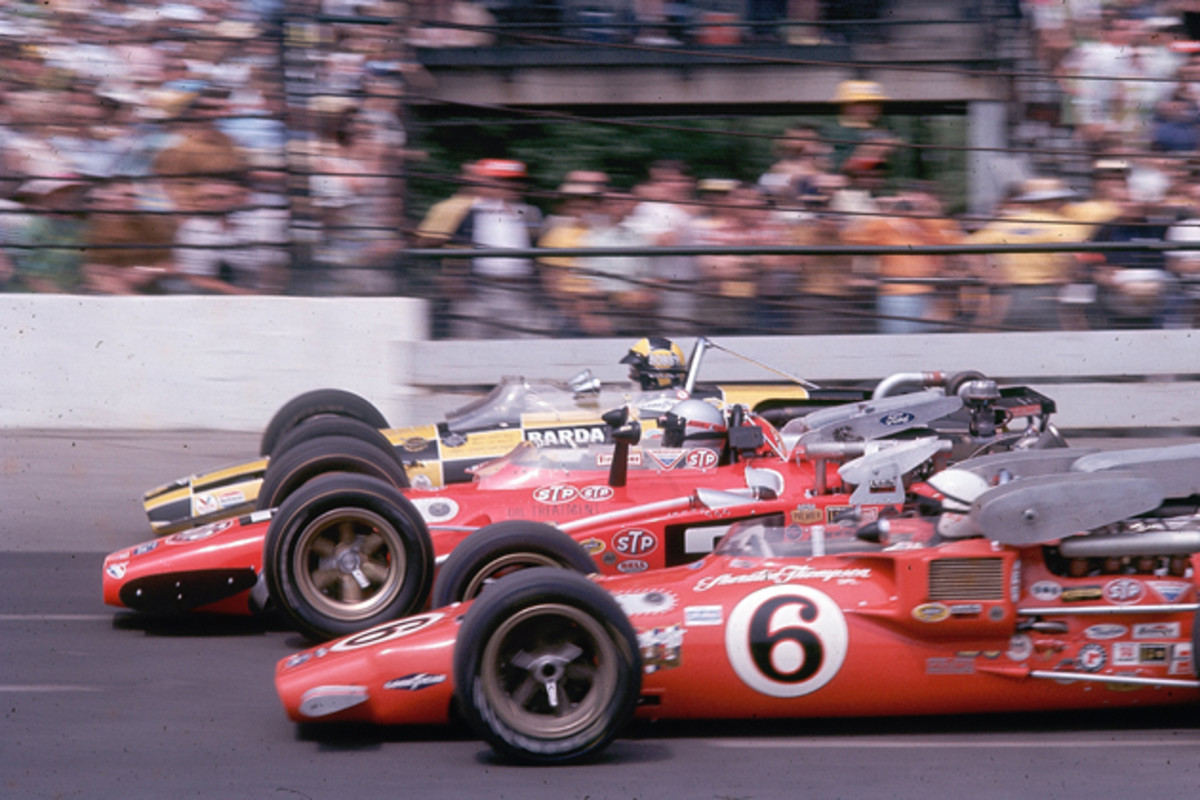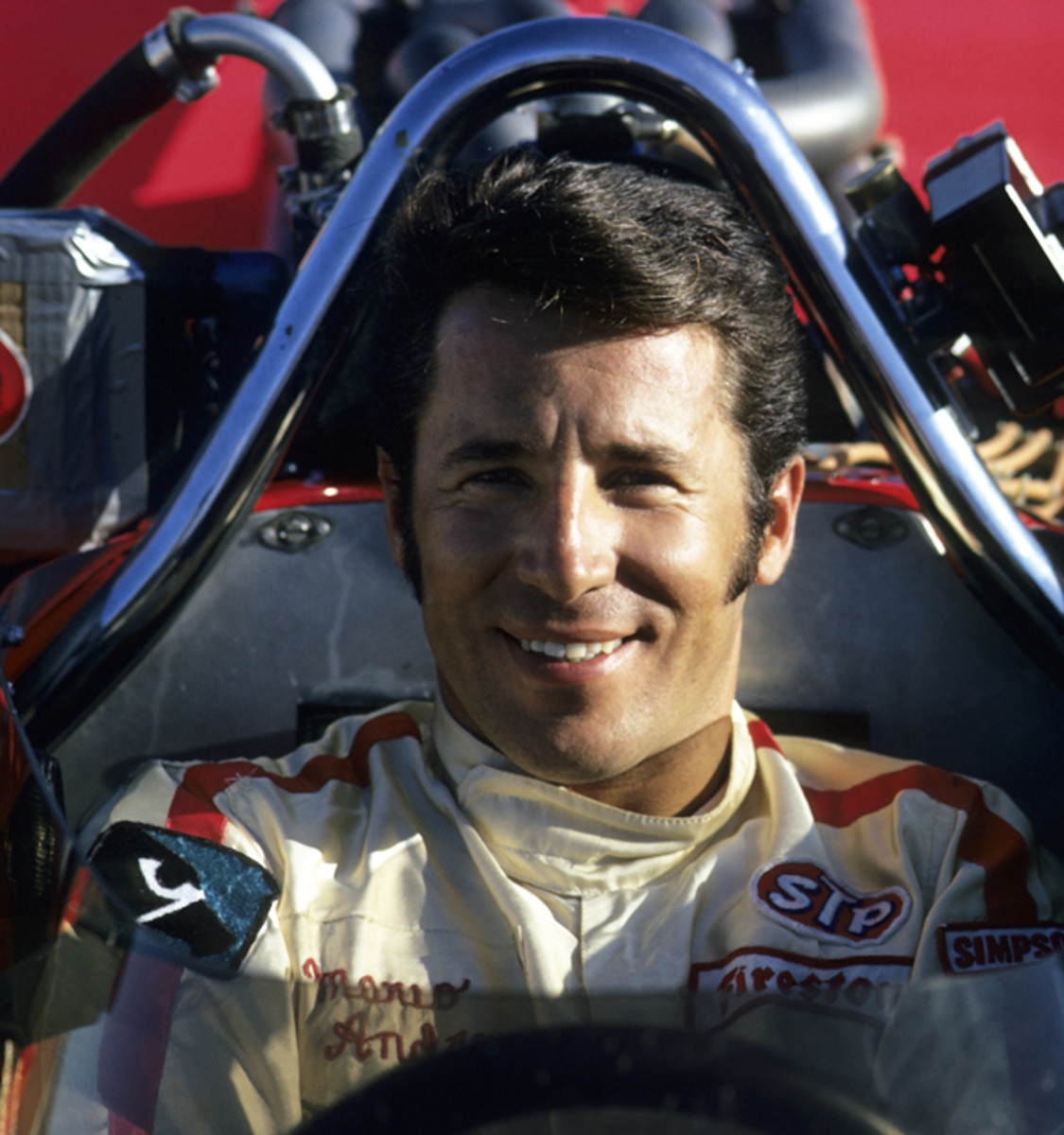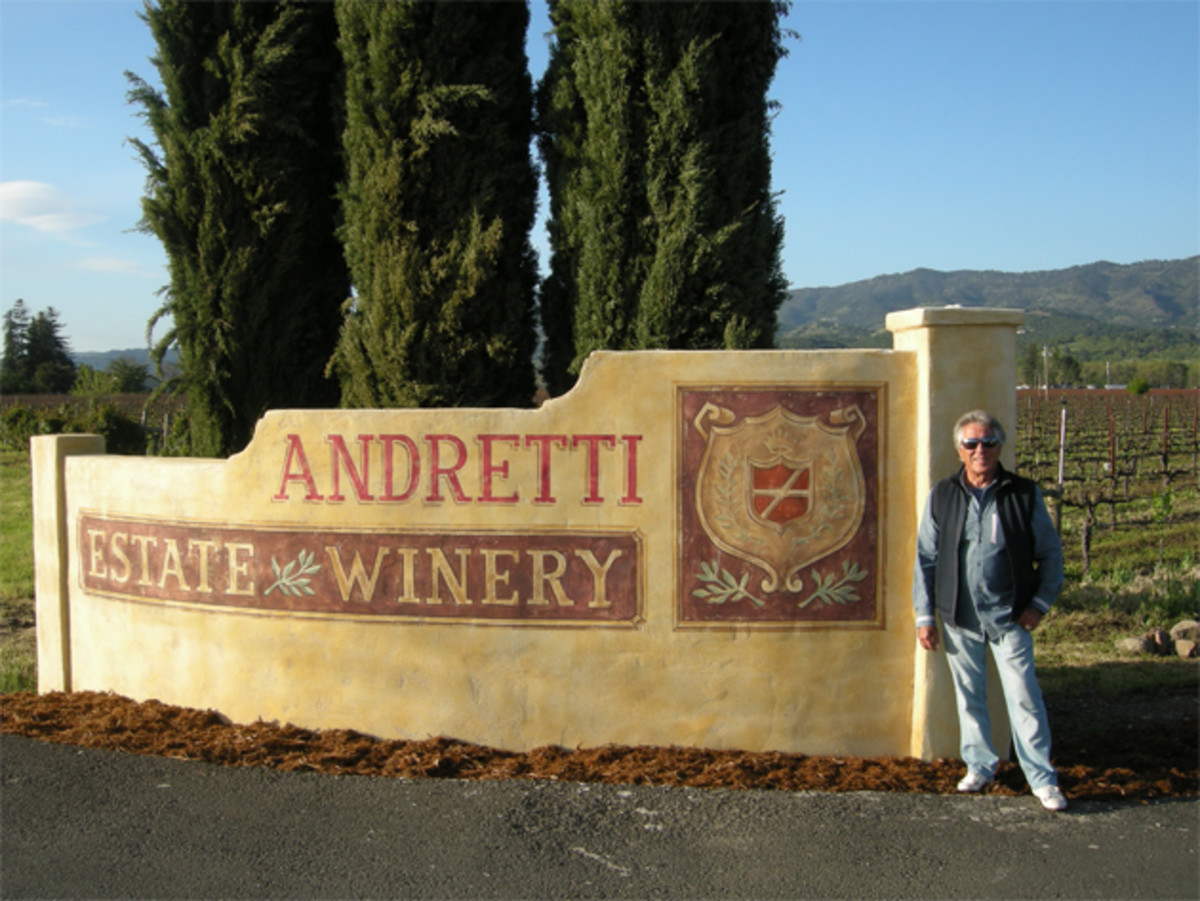After winning racing's rarest trifecta, Mario Andretti's ventures are thriving

This story appears in the May 25, 2015, issue of Sports Illustrated. Subscribe to the magazine here.
Nazareth, PA., a sleepy Lehigh Valley town some 90 minutes away from New York City and Philadelphia, is known for one great tourist attraction: the Martin Guitar factory, where fine acoustic instruments have been produced for more than 150 years. The village has another cultural site, but it remains largely hidden from outsiders—because Mario Andretti doesn't open his house to the public.
If people were welcome to poke around Villa Montona, the 27-acre estate of the 75-year-old racing great, they would be impressed. In addition to the Lamborghini in the garage, on the first floor Andretti has a stockpile of mementos that sit three-deep in display cases lining the walls.

Most of the baubles are from Andretti's racing career, which spanned five decades and eight disciplines. Others, like when he was added to the Living Legends list by the U.S. Library of Congress in 2008, are a testament to Andretti's postracing life as an eclectic entrepreneur who has an estimated net worth of $100 million.
Being surrounded by these souvenirs allows Andretti to do something he did not do when he won them—savor his achievements. "Back then I just focused on work," says Andretti. "I had such a burning desire and passion for it, nothing was going to stand in my way."
Dan Goldie's troubled youth, tennis career enabled his financial business
He inherited this determined streak from his father, Luigi, a farm administrator bent on ensuring a brighter future for his family after their hometown of Montona, Italy, was annexed by Yugoslavia following World War II. (It's now part of Croatia.) After seven years in a refugee camp in Lucca, Italy, the Andretti family arrived in Nazareth in 1955 with $125.
Mario was then just 15, with little understanding of racing. Three days into his American life, he and his twin brother, Aldo, were working at their uncle's gas station when they got their first glimpse of real racing, at Nazareth Speedway. Four years later they were building stock cars and Mario was passing himself off as a 21-year-old so he could score a driver's license.

Andretti started racing professionally in 1964 in every model of car—stocks, sports cars, single-seaters—and found triumph at every turn. In winning the 1967 Daytona 500, the '69 Indianapolis 500 and the '78 Formula One championship, he became the first person to complete the rarest trifecta in racing. What drove him was a desire to provide for his young family, which by the end of 1964 included wife Dee Ann and sons Michael and Jeff. (He and Dee Ann later had a daughter, Barbie.) Or at least that's how he explained it to his wife, a Nazareth native who helped him learn English and has been married to him for 53 years.
"I was lucky to have a woman who really supported me," Andretti says. "She probably would've liked to have picnics and Fourth of July barbecues. But I'm working on all the holidays, all the Sundays. But she's never complaining."
Former Bengals tight end Tony McGee found post-NFL success with logistics
No one expected Andretti to keep turning laps into his 50s, but the idea of retirement spooked him. When he finally decided to hang up his fire suit in 1993, at age 53, it was with the '94 season—his Arrivederci Tour—still to race. "I had a whole season to think about what I was gonna do next," he says. "I was scared because I knew and cared about nothing else. I really didn't have a plan."
As he adjusted to a slower pace, Andretti tried to leverage some of his assets: a household name synonymous with speed and experience marketing it for both himself and for the companies he had endorsed, such as Firestone and MagnaFlow. Andretti had plenty of money—he had made more than $11 million on the track and also got paid for speaking engagements, licensing deals and endorsements. Still it was not enough to finance the racing endeavors of Michael, Jeff and his nephew John, or to satisfy his own high-revving spirit.

Andretti's keen business manager, John Caponigro, a former legal counsel to the CART racing series, encouraged him to parlay his corporate affiliations into something more lasting. In 1997, Andretti partnered with M.J. Castelo, a former Texaco marketing executive, to create Andretti Petroleum, with the intent of making it a wholesale fuel distributor and chain retailer. Today, the company, along with related entities, owns 37 gas stations in Northern California. The company declined to provide revenue figures, but Andretti says it was "probably the best thing that could have happened to us as far as stability."
Andretti's true off-road passion, however, is wine. He'd been making regular pilgrimages to Napa Valley since the 1970s, befriending winemakers who invariably cautioned him against risking his fortune in such a fickle game. But a brand of Andretti wine sold through a licensing deal in '94 was so successful that in '95 he and Joe Antonini (the CEO of Kmart, a longtime racing benefactor) bought a distressed Napa Valley vineyard and began to turn it around. "It was a weak moment in my life," he says now, sarcastically. After considerable investment to overhaul the vines and the staff, The Andretti Winery now distributes 30,000 cases per year across 30 states.

Andretti maintains multiple revenue streams. He endures as an on-screen personality, surfacing as himself—or, rather, as the Ford Fairlane he won with at Daytona—in the 2006 movie Cars, and most recently in TV ads for the Andretti Experience, a white-knuckle ride-along that he gives at IndyCar races in a specially made two-seater.
In other words, Andretti is nowhere near ready to idle around his house. "I can definitely say I'm still living the dream," he says.
